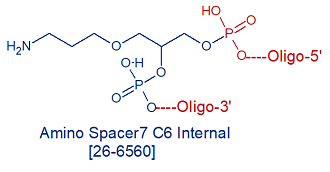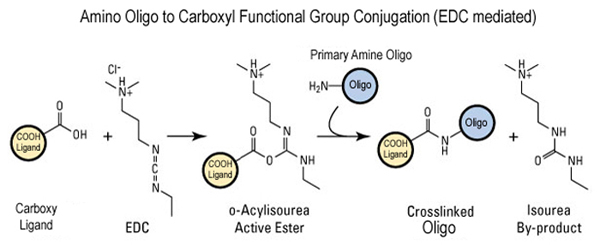In this section: Introduction | Quality Control | Purification | Modifications | Long Oligos | Price List
In this section: Introduction | Molecular Beacon FAQ's | Fluorescent Probes Price List | Other Fluorescent Molecular Probes
In this section: SPCT | DME SPCT Intro | Order DME TaqMan® Assays SPCT | SNP PCT Search | Gene Expression Assays | SPCT Design Center | GeneAssays
In this section: RNA Oligonucleotides | Quality Control | Purification | Modifications | RNAi Explorer™ Products and Prices | Custom RNAi | RNAi Design Guidelines | SmartBase™ siRNA Modifications | shRNA Explorer™
In this section: PCR Amplification & Analysis
In this section: Introduction | Genemer™ | GeneProber™ | Prober™ Gene Detection Kits | GScan™ Gene Detection Kits | Genemer™ Control DNA | Infectious Diseases
In this section: Gene Construction
In this section: Introduction | The Omni-Clean™ System | The Omni-Pure™ Plasmid Purification System | The Omni-Pure™ Genomic DNA Purification System | Viral DNA & RNA Purification | Microbial DNA Purification | Plant DNA Purification
In this section: Introduction | Quality Control | Purification | Modifications | Long Oligos | Price List
In this section: Introduction | Molecular Beacon FAQ's | Fluorescent Probes Price List | Other Fluorescent Molecular Probes
In this section: SPCT | DME SPCT Intro | Order DME TaqMan® Assays SPCT | SNP PCT Search | Gene Expression Assays | SPCT Design Center | GeneAssays
In this section: RNA Oligonucleotides | Quality Control | Purification | Modifications | RNAi Explorer™ Products and Prices | Custom RNAi | RNAi Design Guidelines | SmartBase™ siRNA Modifications | shRNA Explorer™
In this section: PCR Amplification & Analysis
In this section: Introduction | Genemer™ | GeneProber™ | Prober™ Gene Detection Kits | GScan™ Gene Detection Kits | Genemer™ Control DNA | Infectious Diseases
In this section: Gene Construction
In this section: Introduction | The Omni-Clean™ System | The Omni-Pure™ Plasmid Purification System | The Omni-Pure™ Genomic DNA Purification System | Viral DNA & RNA Purification | Microbial DNA Purification | Plant DNA Purification
Amino Spacer 7 C6 Internal
Amino Spacer 7 C6 Internal
Code : [AmSp7-C6-Int]

Modification : Amino Spacer 7 C6 Internal
Catalog Reference Number
Category
Modification Code
5 Prime
3 Prime
Internal
Molecular Weight (mw)
Extinction Coeficient (ec)
Technical Info (pdf)
Absorbance MAX
Emission MAX
Absorbance EC
26-6560
Conjugation Chemistry
[AmSp7-C6-Int]
Y
Y
Y
211.2
-
PS26-6560.pdf
-
-
-
| Catalog No | Scale | Price | | 26-6560-05 | 50 nmol | $227.00 | | 26-6560-02 | 200 nmol | $227.00 | | 26-6560-01 | 1 umol | $406.00 | | 26-6560-03 | 2 umol | $620.00 | | 26-6560-06 | 5 umol | $1,827.00 | | 26-6560-10 | 10 umol | $2,484.00 | | 26-6560-15 | 15 umol | $3,408.00 |
| Discounts are available for Amino Spacer 7 C6 Internal! |
| Modification* Discount Price Structure |
|
1 site/order
|
List price
|
|
2 sites/order
|
10% discount
|
|
3 sites/order
|
20% discount
|
|
4 sites/order
|
30% discount
|
|
5-9 sites/order
|
50% discount
|
|
10+ sites/order
|
60% discount
|
|
*Exceptions apply
|
Name and Code change effective September 19, 2023. Amino Spacer 7 C6 Internal, Code [AmSp7-C6-Int] was previously called Amino C6 internal with a code [AmC6-Int]. The name change reflect more accurately the total spacer length of 7 that includes C6 and 1 oxygen.
Amino Spacer 7 C6 Internal can be placed at any internal site and at the 3' end for oligos longer than 120mer with the use of the Universal CPG to intiate synthesis. Amino Spacer 7 C6 Internal is a non-nucleoside modification primarily offered for internal labeling for eventual conjugation to solid surface or other ligands including fluorophores and quencher. The internally placed Amino Spacer 7 C6 Internal will enable the oligo to fold. Amino C6 nucleosidic modifications are available for all 4 bases. For 3' and 5' amino modification consider our other appropriate 3' and 5' amino modifications listed in related modifications.
Amino Spacer 7 C6 Internal is a non-nucleoside modification that can be used to incorporate an active primary amino group at an internal position of an oligo. This is helpful when the purpose is to have the oligo conjugated to a surface or ligand at this position. The amino group can also be used to conjugate reporter fluorophore or quencher internally in an oligo. This can then be conjugated to a NHS Activated ligand. The amino group then becomes internal to the 5' end ligand. The amino group is separated from the 5' end nucleotide base by a 6-carbon spacer arm to reduce stearic interaction between the amino group and the oligo.
The presence of the primary amino group allows the user to label the oligo with a variety of different ligands for affinity, reporter or protein moieties (as NHS esters or isothiocyanates), depending on the application. Examples include biotin, digoxigenin, and fluorescent dyes or quenchers, magnetic beads and enzymes (for example, alkaline phosphatase).

-
The primary amine labelled oligos can also be conjugated to carboxyl functional groups usually for solid supports applications using EDC mediated reaction as shown in the figure below.

- Amino Spacer 7 C6 Internal
|
|
